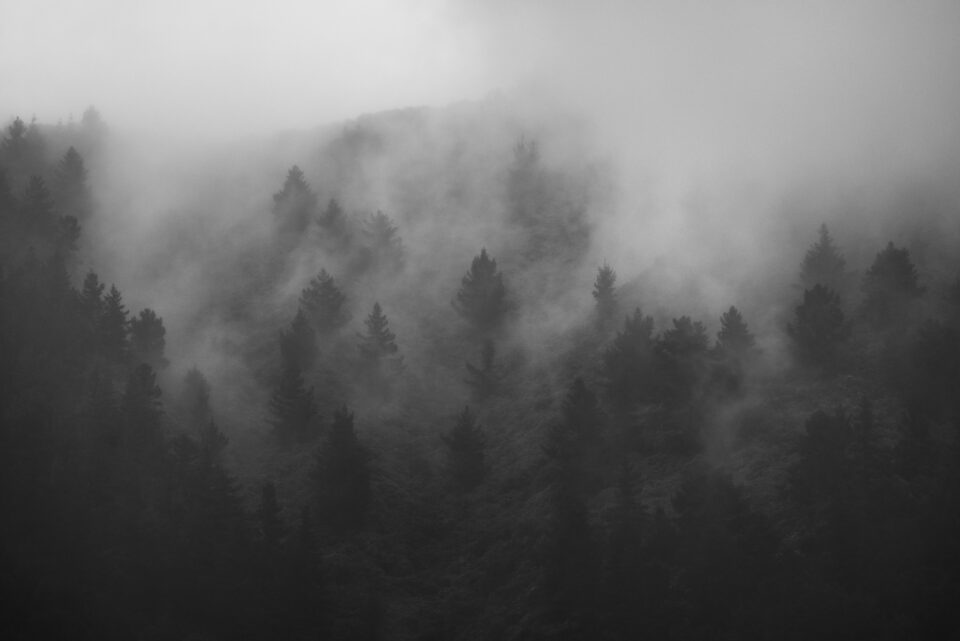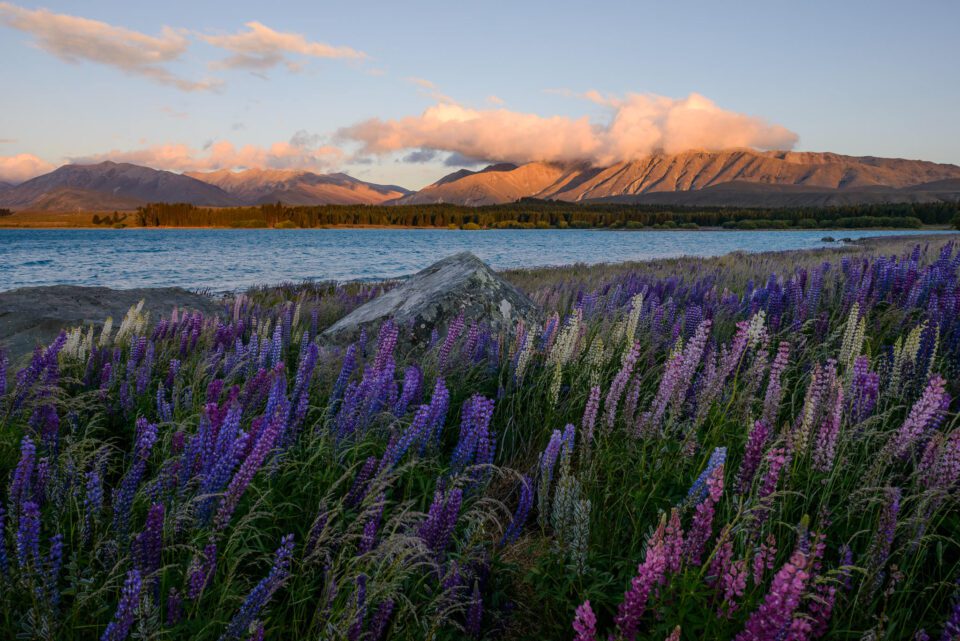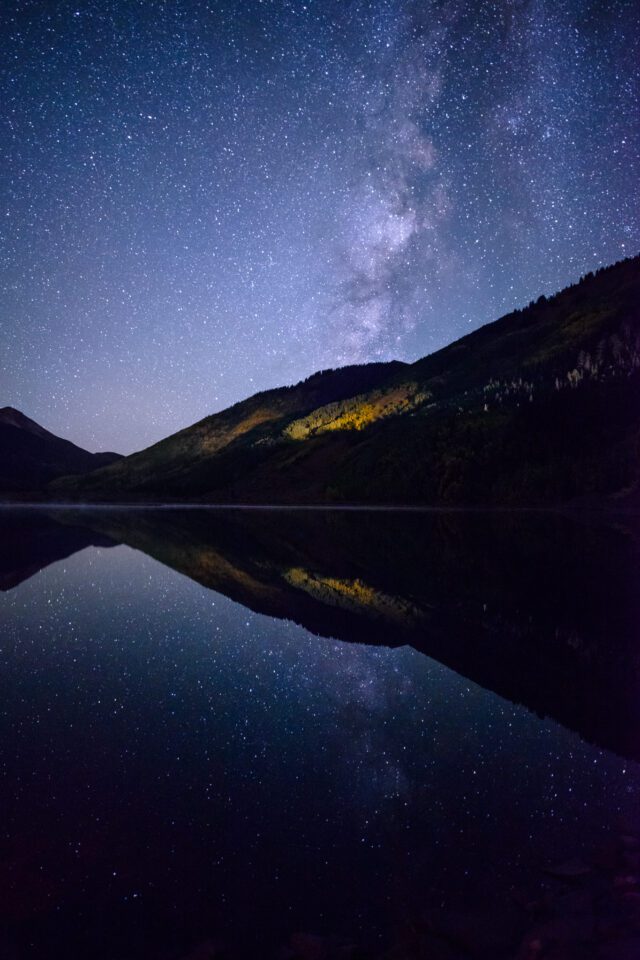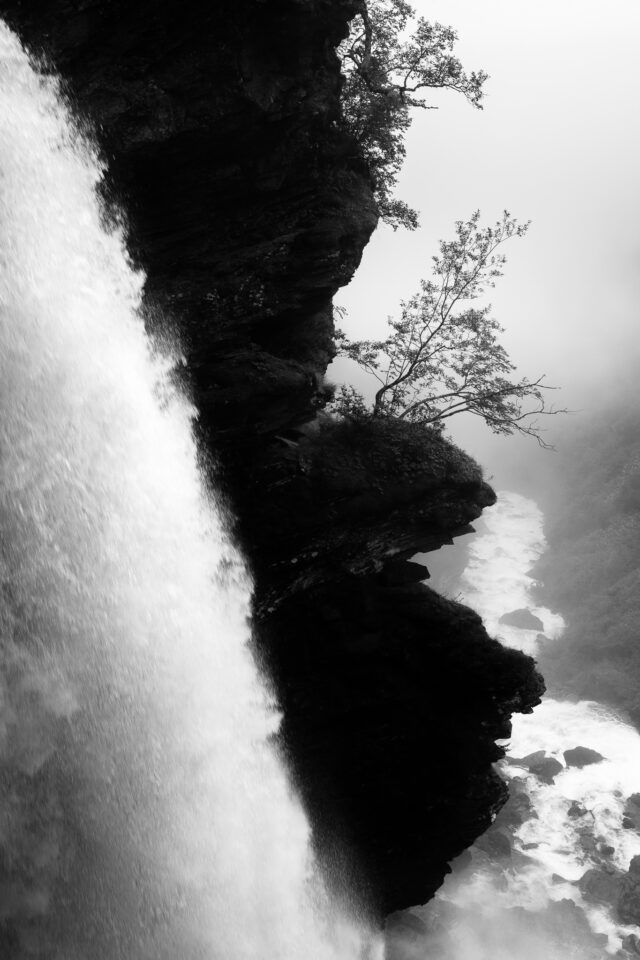For landscape photography, most of the time, you’ll end up using your camera’s base ISO. That’s the power of a tripod; it lets you set long enough shutter speeds to capture a bright photo, even in dark environments at low ISO values. However, settings like this do not work for all images. Sometimes, depending upon the landscape, you’ll need to raise your ISO in order to capture a successful photograph. This article dives into the most common of those situations.
1) Camera Movement
Landscape photographers almost never deal with camera movement. If you’re doing things right, you’ll end up using a tripod most of the time, which (unless in extreme wind) essentially eliminates camera movement.
Of course, there are exceptions. Many landscape photographers enjoy hikes and climbs, where a tripod could be too much effort to bring along. In that case, you’ll be limited to your ability to handhold the camera sharply. This won’t be particularly problematic if you take photos during the day, although you may end up with difficulties as sunset approaches and everything grows darker. If this applies to you, you’ll obviously have to use a higher ISO value when it gets dark.
This situation can potentially be prevented by carrying along a travel tripod, or even a tabletop tripod, which takes up very little weight and space. Other photographers will choose to carry their full tripod setup even on long hikes, simply to have the best possible quality when the light starts to fade. It depends upon the person.
Not all situations of camera movement are possible to avoid, though. If you happen to take photos from a moving platform, you’ll need to keep an eye on your shutter speed. Tripods won’t help here, since your tripod will also be moving! If your photos start to turn out blurry, a higher ISO will be impossible to avoid. This will be the case if you take photos from an airplane, a car, a helicopter, a boat, and so on.
In the photo below, for example, I had to use an ISO of 560 in order to capture a properly-exposed photograph. I was on a boat while I captured this image, and the longest shutter speed I could use (even with vibration reduction enabled) was 1/160 second. Luckily, this image is completely sharp — something that wouldn’t have been possible otherwise.
2) Subject Movement
Windy days are some of the most difficult for landscape photography. Why? Most plants in your photo — leaves, grasses, flowers — will become blurry, even at very ordinary shutter speeds.
Unfortunately, windy days often coincide with beautiful light and other amazing conditions, such as a storm rolling in. When your main subjects are moving quickly, how can you capture successful photographs?
Just as for camera movement, you’ll need to use a higher ISO (combined with a quicker shutter speed) if you want to capture successful photos of moving subjects. For example, when I was taking the photograph below, the flowers were moving around incredibly quickly. This spot was very windy, and even a shutter speed of 1/160 second (which is what I ended up using) resulted in blurry flowers in certain photographs. The breeze lulled briefly, and I got the shot I wanted:
Plants in the breeze aren’t the only movement that you’ll run into as a landscape photographer. Anything that moves will run into the same problem, such as icebergs floating in a lake or stars moving across the sky at night. In the photo below, I had to use an ISO of 6400 in order to capture a 15-second shutter speed and successfully capture stars:
Another common example is a waterfall. Depending upon your shutter speed, a waterfall could be anything from a frozen statue of droplets to a dreamy, silky blur. Although long shutter speeds and smooth water are hugely popular for landscape photography, I find that a short shutter speed (or a medium shutter speed like 1/2 second) can be ideal for certain images, since it shows more texture. The image below wasn’t shot at a high ISO, but it demonstrates what I mean:
Finally, it’s important to note that you should still use a tripod in most cases, even if you’re using a high ISO and a shorter shutter speed. For example, say that you’re taking pictures of a flower in a mild breeze — enough so that you need to use a shutter speed of 1/10 second or faster in order to capture a sharp photo. In this case, even if you’re shooting at, for example, ISO 800, it still makes sense to use a tripod. Otherwise, at 1/10 second, your subject’s motion may be frozen, but your handheld camera could still be moving too much to capture a sharp image.
3) Time
The final reason to use a higher ISO for landscape photography is for the sake of time.
This situation isn’t nearly as common as subject or camera movement, but it still matters. What do I mean by time? Simple — it’s annoying if your camera spends too long capturing a single photo. Or, sometimes, you need to take several photos as quickly as possible, and a long shutter speed makes that impossible.
Consider this scenario. It’s nighttime, and you’re trying to capture a lunar eclipse. Specifically, you want a landscape photo that includes the moon in part of your frame. However, the eclipse only lasts for a short period of time, and your shutter speed is quite long — say, twenty seconds at ISO 100. What happens, though, if you use a higher ISO (say, ISO 400)? Simple: you’ll be able to use a much quicker shutter speed and capture many more photos during the eclipse! This means you can experiment with several different compositions and potentially capture a better photo.
Obviously, that’s a very specific situation. However, any scenario that presses you for time could be eased by a higher ISO. For example, perhaps you are shooting a nighttime timelapse, and you want your final video to be made from 240 individual images (which, at 24 fps, would result in a ten-second video clip). However, if all 240 images have an exposure length of 30 seconds, you’ll be taking pictures for two hours! Even if your ISO is only one stop brighter (and your shutter speed 15 seconds), you’ll get the same number of photos within the span of one hour, which is much more manageable. This obviously depends upon the specific scene that you are shooting — for example, one which you want two hours worth of movement in your video regardless — but it’s important to keep in mind.
In fact, at night, I often find myself trying to test whether I successfully focused on the stars. Instead of taking a test photo with my typical nighttime settings (something like 20 seconds and ISO 3200), I’ll use a higher ISO in order to take a quick test photo and see if everything is in focus. For example, at ISO 12,800, I can use a shutter speed of 5 seconds and check much more quickly whether my focus was successful.
You won’t often find yourself using a higher ISO value simply to save yourself time, but it’s worth keeping in mind as an option. Chances are good that you’ll run into a situation like this eventually.
4) What About ISO Invariance?
(This section is a bit technical, and not as important, unless you are interested in the underlying technical side of ISO.)
ISO invariance adds another layer to this problem. So, what is ISO invariance?
First, although your ISO setting does brighten and darken your images, it doesn’t actually affect the amount of light that your camera captures. Instead, it simply amplifies the light that your camera sensor received in the first place. But… that’s exactly what happens when you brighten a photo in post-processing software! So, why bother setting ISO in-camera when you can simply shoot at ISO 100 and then brighten things later?
It’s a fair question to ask. The main answer is simple: typically, for most cameras, you’ll get better image quality when you set the ISO in camera. This is because no cameras on the market are 100% ISO invariant. In other words, every camera provides at least a slight benefit if you set ISO in camera, although a theoretical “perfectly invariant” camera wouldn’t.
Modern Nikon and Fuji cameras are the closest ones on the market to ISO invariance, though they’re not completely invariant. Canon’s cameras aren’t ISO invariant at all, and other brands (Sony and Olympus) are somewhere in between.
What does this mean for you? Honestly, not much, except that it’s not a problem if you accidentally used too low of an ISO and you have to brighten things later. You won’t lose much, if any, image quality by doing so (assuming that your camera is close to ISO invariant).
Personally, I still use my camera’s ISO setting exactly as you would expect. So, if a photo is dark at a given aperture and shutter speed, I’ll use a higher ISO. That’s even true with my Nikon D800, which is one of the more ISO invariant cameras on the market.
ISO invariance isn’t something you should worry about day-to-day. However, it is an interesting topic to dive into if you are interested in the technical side of things.
5) Conclusion
If you find yourself in a situation that requires a high ISO for landscape photography, that’s probably a good thing. It means that you’re out at night, or you’re taking pictures from a boat, or you just hiked too far to carry a tripod, or it’s windy and the landscape is changing quickly. All of these situations are fantastic, since they’re the types of scenes that result in unique, once-in-a-lifetime photos.
When you do use a high ISO for landscapes, it’s important to know why you’re doing so. If you’re on a stable tripod, you have plenty of time, and nothing is moving in the landscape, you should rarely, if ever, be at anything other than base ISO.
That said, you’ll certainly encounter situations where a higher ISO is necessary, and you should be aware of them when they occur. If you’re having difficulty capturing flowers that are moving in the wind, for example, high ISO values should be the first thing on your mind — even if you’re on a tripod.
Ultimately, the goal is to know exactly which settings to use, even in the most complex of situations. Difficult landscapes are often the most beautiful, and you should know how to capture anything you find — no matter the conditions. Sometimes, that means you need to use more than your base ISO.
The post When to Use a Higher ISO for Landscape Photography appeared first on Photography Life.
from Photography Life https://photographylife.com/when-to-use-a-high-iso-for-landscape-photography




No comments:
Post a Comment